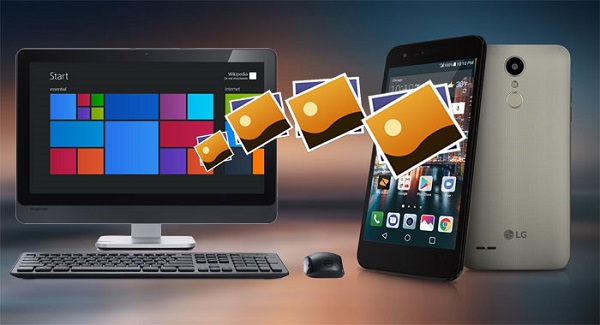Do you have your mobile saturated with photos? Have you busted your internal storage space AND your SD card? Maybe it’s time to clean up. There are several methods to transfer photos from mobile to computer: we will tell you how to do it easily and free. For Android and iPhone: don’t miss it!
How do I download pictures from my phone to my computer?
Surely you know Google Drive because it is the cloud service par excellence, but it could well be others (we will give you the best known below) that will help you transfer all the photos from your smartphone to your computer. Most of these cloud storage services have a free version, a paid version and another focused on professionals ( business ).
How to do it?
the process is similar in all these apps / services, and they are valid for transferring photos from Samsung to the PC, or from practically any mobile model. Normally they work with Android 4.0 or higher and with the iOS versions of the last years. The steps to follow are usually similar for all of them:
- You create an account with the app or from the web with an email and password. In the case of Drive, as in Android, we use our Gmail for the Play Store, normally it is already synchronized and there is not much to do.
- You download the app on your cell phone or Tablet.
- Within the application, once you log in with your credentials, you can go through the photos automatically or manually (if you want one by one, for example). Right now, “they are in the cloud.”
- When you have already passed the ones that interest you, go to the web or desktop version of the application that you have used before and download them to your PC. Normally you can do them all at once or individually.
What is easy?
Well, now you only have to choose one of the following services:
Dropbox: One of the best known. Its user interface is very intuitive in any of its versions. One of the most popular options is 1TB of storage for $ 9.99 per month.
Google Drive: it is one of the most popular when it comes to storing any type of file on different platforms.
Google Photos: It is an even more specific version of Google, in this case for photos and videos on your mobile. You can have automatic syncing activated and thus, if you lose your phone, you can recover everything from the cloud. In addition, it is unlimited and free.
OneDrive: Microsoft’s cloud service, especially good for those who use Outlook more than Gmail.
With USB cable
The traditional never fails. To transfer photos from computer to mobile or vice versa, we would only need a USB cable in conditions. Before starting, make sure that none of the devices (neither the mobile nor the computer) have viruses, as they could be transferred through the cable.
Transfer files (to pass it all)
Transfer photos (PTP) -> this is the option that interests us now! To choose one or the other option, you just have to lower the screen by sliding your finger from top to bottom and you will see where to choose it. Once chosen, you don’t need to download software or programs. We will access our mobile device as if it were another folder:
From there, we will only get the folders that contain images. Now it is simply to copy and paste in the destination folder that we want.
With the Photosync app (Wi-Fi)
While transferring photos wirelessly works very well with a cloud service, not everyone is sure about uploading their photos to something “unknown”, for security reasons. Although the safest is by cable (as we told you in the previous section), you have the option of doing it through Wi-Fi with different mobile applications.
There are several apps to transfer photos from mobile to computer, but the one we have chosen is Photosync. Let’s see why.
Photosync is perfect for transferring videos and photos from your Android tablet or mobile to your computer or vice versa, or between them. Or whatever. You can exchange photos between these devices and platforms (it doesn’t matter which way):
Any Android device (tablets, smartphones …)
iOS: iPhone and iPad
Cloud storage services
NAS ( Network Attached Storage ): FTP, TFTP, NFS or CIFS protocols.
Computers (Windows, Mac …)
It is a super simple application to use and for which you only need the devices connected to the same Wi-Fi network. These are its main characteristics and the reasons why it is our favorite:
- It has a score of 4.5 out of 5 with more than 7000 reviews.
- Multiplatform (as you have seen in the previous points).
- Fully customizable to your taste and needs.
- Constantly updated for better performance and more security.
- It not only allows you to transfer the photos, but you can share or download them.
- It works with any Wifi signal, whether it is Hotspot or not.
By Bluetooth
Bluetooth is another type of technology widely used to transfer between devices. We believe that it is not the best option, especially if we compare it with the others, because it tends to present more errors, especially when we try to pass many photos at the same time.
However, it can be a good (and fast) option to transfer photos to your PC Windows 10, 8.1, 7, Mac or whatever. The only condition is that your computer has this integrated technology.
To do this, you must synchronize your devices:
- Activate Bluetooth on your mobile (Settings / Bluetooth / Activate). Make sure you have your device visible during the transfer.
- Activate Bluetooth on your computer. In Windows 10, for example, you can find it in Settings / Devices / Bluetooth and other devices. Once inside, activate Bluetooth.
- Now it’s time to pair mobile and PC: to do this, take your phone, search for available devices and click on the name of your PC. You will get a linking code and we will give it to On our computer, we will give it to accept.
Now we can send photos via Bluetooth from our phone to the computer, in the same way as between mobile devices.
With microSD card
As an alternative to cable and Wi-Fi / Bluetooth or cloud connections, we have the option of transferring the photos from the mobile’s microSD to our computer. The conditions that must be met in this case are two:
All the photos that we want to pass must be in the mobile’s microSD, not in the internal storage.
Our laptop or desktop PC must have a card reader. In addition, we will need a microSD to SD adapter since it is the latter that can usually be read on computers.
Once we have the images on the card, it is a matter of putting it in the corresponding slot on the computer and opening it like any other folder (from the computer). Once inside, copy and paste the photos and videos to the destination folder you want.





